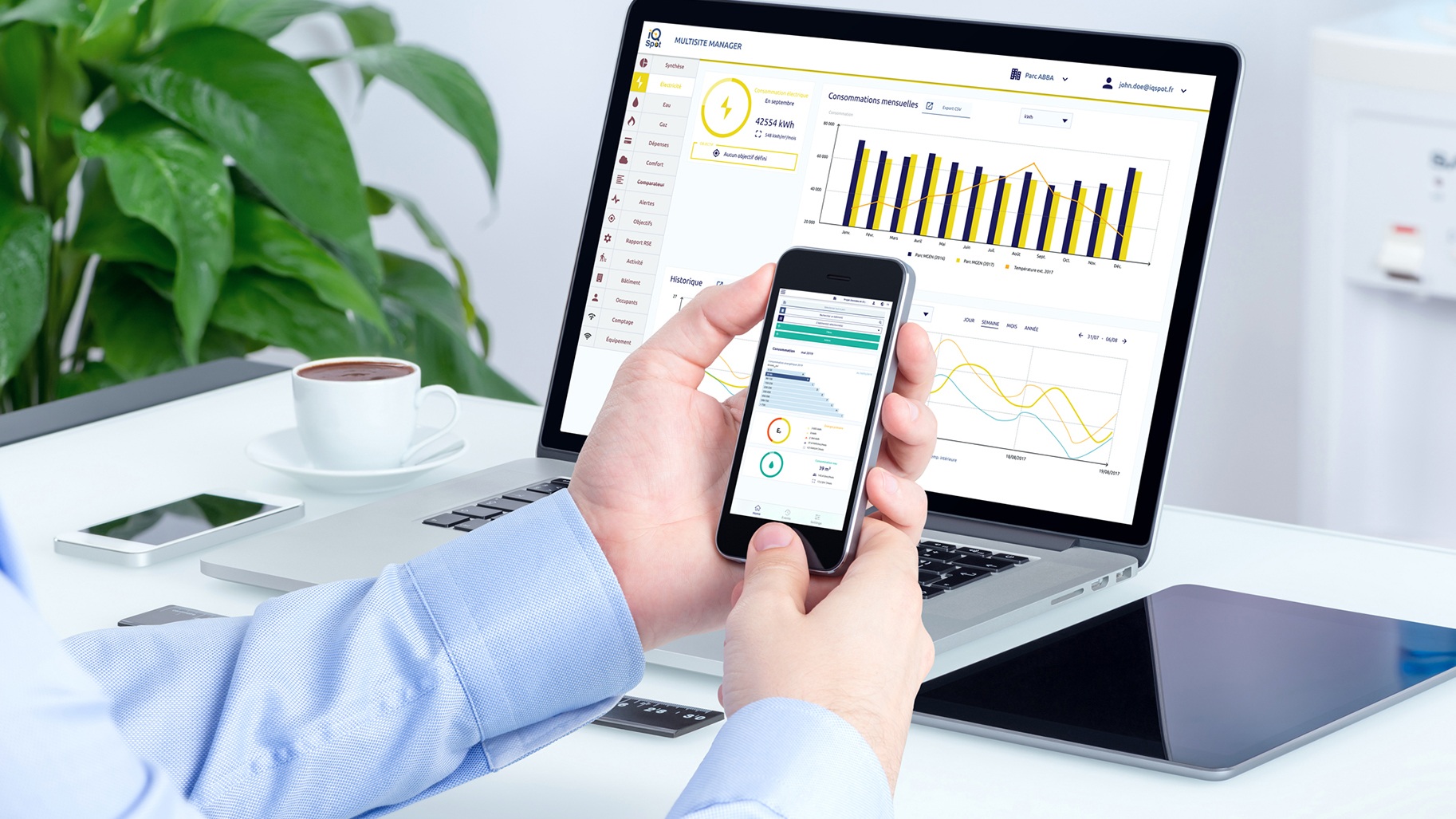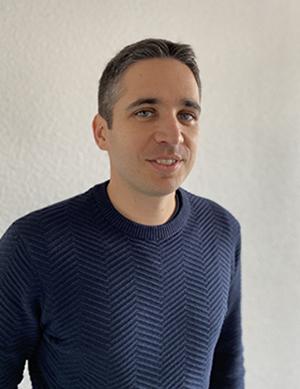
Could you describe what it is you do ?
Measuring energy use is essential when it comes to enhancing efficiency. Energy efficiency is a major challenge facing the property sector, which accounts for 40% of all energy use in France and 20% of greenhouse gas emissions. People need to know how much energy they are using and to be able to take immediate action in order to optimise energy use, and iQspot delivers on both of those fronts.
How does it work ? We fit low-energy IoT (Internet of Things) sensors to all of the meters in a building (water, gas, electricity, heating/cooling networks, etc.). The data is then relayed to our platform, where it is analysed in real-time using algorithms. Alerts are then sent to building managers as soon as any anomalies or major changes are detected. As straightforward as it might seem, this solution represents a major breakthrough for a sector which has a lot of intermediaries (a whole host of figures are involved, with energy costs split between investors and the occupiers of a building, making it very difficult for good practice in terms of energy use to emerge), and which has thus far never had a simple and effective solution for collecting exhaustive data on energy use.
Our application enables precision control for each individual building, with highly practical features for managing whole sites with dozens of buildings. The overarching goal is to help our clients make investment choices (by focusing their efforts on their most energy-intensive assets, for example) and to assist them with producing CSR reports or meeting increasingly strict regulatory obligations when it comes to reporting and energy efficiency. Our clients are also able to record what we call “comfort” data, including temperature, noise, brightness and CO2. They can then offer this monitoring service to their tenants, something which the health crisis has made all the more appealing.
What are the technological challenges facing the sector ? And what’s next for the start-up ?
The main challenge is the maturity of the sector we're dealing with, which remains very analogue. However, the importance of efficiency, driven by the market - most notably tenants - is forcing owners and managers to look into long-lasting, reliable and effective monitoring solutions that don't rely exclusively on human intervention, as is still often the case.
Our solution also has its own technological challenges to overcome :
- Our platform is agnostic from a technological point of view and should stay that way: we are able to collect all sorts of data from different sources, shared via different protocols. This is important if we want to ensure the system is long-lasting and remains open to new developments. Beyond this, there is the issue of the economic and environmental performance of the mechanisms used to collect data. We want our solution to be accessible to everyone, and we don't want to be burdening people with extra equipment. The quantity and diversity of data that we have - which is increasing daily -, when processed properly, should help to reduce the amount of equipment used and to tackle this issue.
- Our algorithms can be used to automatically detect any major changes to energy use compared to a building’s past data. As the number of our devices in use grows, and with the emphasis placed on deep learning, we can improve this detection potential by comparing a building’s behaviour to that of similar buildings.
- The main advantage of our solution lies in its day-to-day energy management. One challenge that we have had to overcome has involved transferring part of this trade knowledge over to our application.
R&D is therefore very much a key concern for iQspot, while the growth in the number of buildings using it is a vital lever in terms of its value.
In 2020, this number nearly doubled, crossing the threshold of one million m2, despite the crisis. The current dynamic is backing up this rate of growth.
What did you do in your career before ? What prompted you to launch the start-up ? What support did Inria provide ?
Before iQspot, I studied for a PhD as part of the Phoenix* project team at Inria Bordeaux alongside Quentin Enard, who I co-founded iQspot with. I then spent time at the Institute as a transfer and innovation engineer. I met a number of entrepreneurs during that time, who helped me to develop a better understanding of our target market and made me want to pursue this adventure. Five years down the line, iQspot has grown to a good size, with fifteen employees, the bulk of whom work in R&D. And we’ve just opened a branch in Paris in addition to our headquarters in Bordeaux.
Learn more about the technology developed by iQspot
* Completed in 2017, Phoenix was a joint project team between Inria, CNRS, the University of Bordeaux and Bordeaux INP within the LaBRI (UMR 58000) and the Inria Bordeaux Sud-Ouest research centre.
